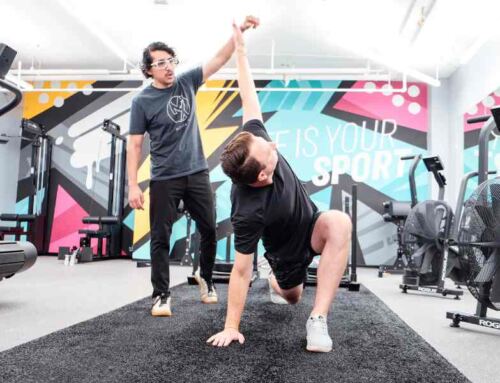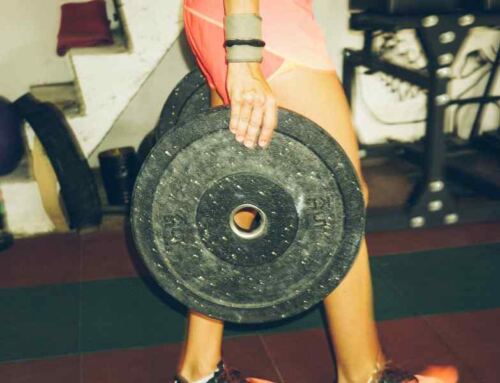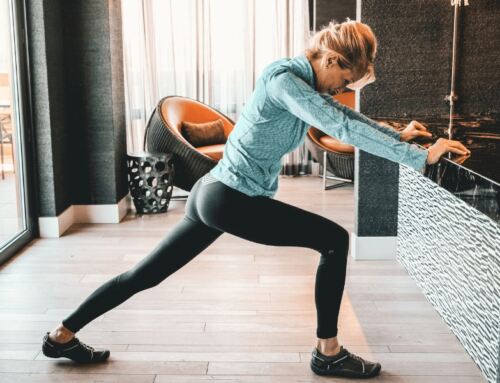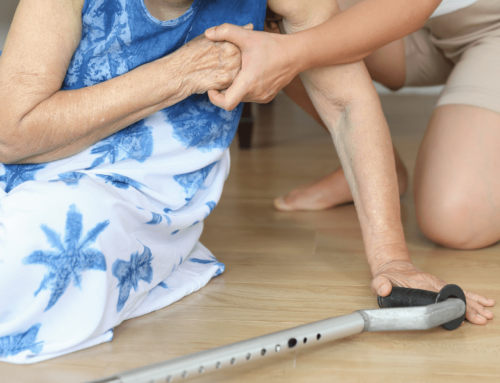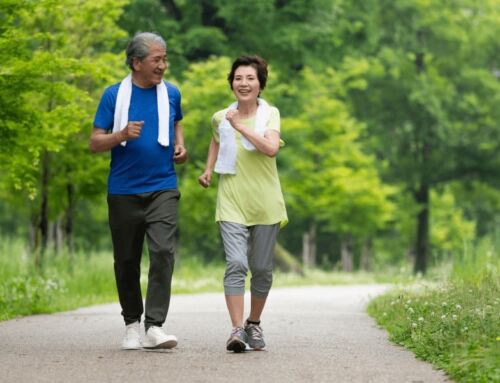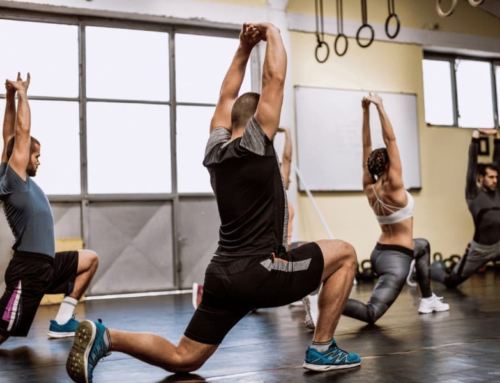Balance helps support coordination and strength, stability and mobility, and your overall health and wellbeing.
From athletes looking to improve their performance to older adults looking to maintain their independence, balance training is for everyone.
What Does Good Balance Consist Of?
Before jumping into it, it’s important to understand some of the fundamentals of balance! It is comprised of three key components:
- The Musculoskeletal system: This refers to muscles, tendons, ligaments and even bones which help keep us upright! Not only does this system hold us up, but it provides information about where we are in relation to the world around us, such as our feet planted firmly on the floor or our hands touching the handrailing when climbing stairs. When training balance, there are plenty of ways to challenge this system safely!
- Vision: This one sounds like a no-brainer but is often overlooked! Us humans rely on vision input to help maintain our balance. Simply closing your eyes can challenge your balance and help train you.
- Proprioception: This refers to the awareness of the position and movement of the body. How do you know where your ears are without seeing them? How can you touch your nose with your eyes closed? Proprioception! We gain proprioceptive feedback through complex structures within our inner ear as well as through a neurologic feedback loop. This is known as the vestibular system and can get stronger with exercise similar to lifting weights to grow your muscles. Proprioception can be challenged by standing on an unsteady surface like a foam pad or pillow- make sure there is something to grab on to nearby, this can get dicey!
So what are balance exercises? And just how easy are they?
We put together a list of our top 5 exercises for balance that you can do right at home…
At-Home Balance Exercises
Having good balance makes simple, everyday activities, like going up and down stairs, pivoting in another direction, and carrying heavy items, easier.
Athletes use exercises for balance to improve their coordination, boost their mobility, and strengthen their core—all enhancing their athletic performance.
But as we age, we can often lose our balance, putting us at risk for falls and injuries and compromising our independence.
Whatever your reason for wanting to improve your balance, we’re here to help.
What Are Balance Exercises?
Balance is the ability to control the body, distributing the weight in a coordinated effort to remain upright and stable.
There are two types of balance exercises: dynamic balance exercises and static balance exercises.
Dynamic balance exercises work to improve balance and posture control through movement.
Static balance exercises support and strengthen balance in a grounded, stationary position.
Both types of balance are essential targeted with easy, everyday balance training, including sitting exercises, flexibility exercises, and strength exercises.
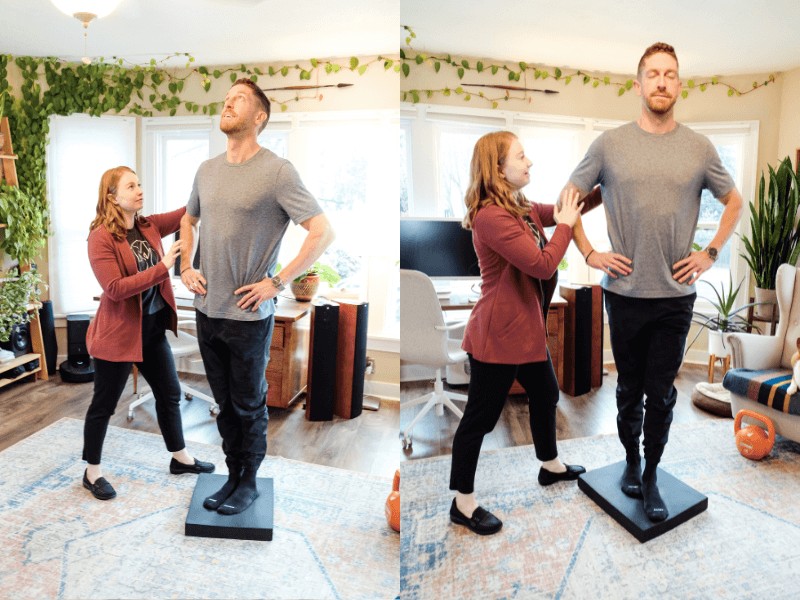
#1: Feet Together Balance
Standing with your feet together is a great place to start when thinking about training your balance. Two feet on the floor is a stable starting position, but this exercise can be made more challenging as you feel more comfortable.
Start by standing with your feet together in front of a counter or next to a wall so you can hold on as needed.
Slowly, remove your hands from the counter and try to maintain your balance for as long as you can. You can place your hands back on the counter if you start to lose your balance. Work up to holding this position for 30 seconds.
For an advanced exercise, try closing your eyes. This will challenge your vestibular system, as you cannot use your vision to help you stay balanced. When you are ready, you can also try this exercise standing on an unsteady surface, such as a yoga mat or BOSU ball.
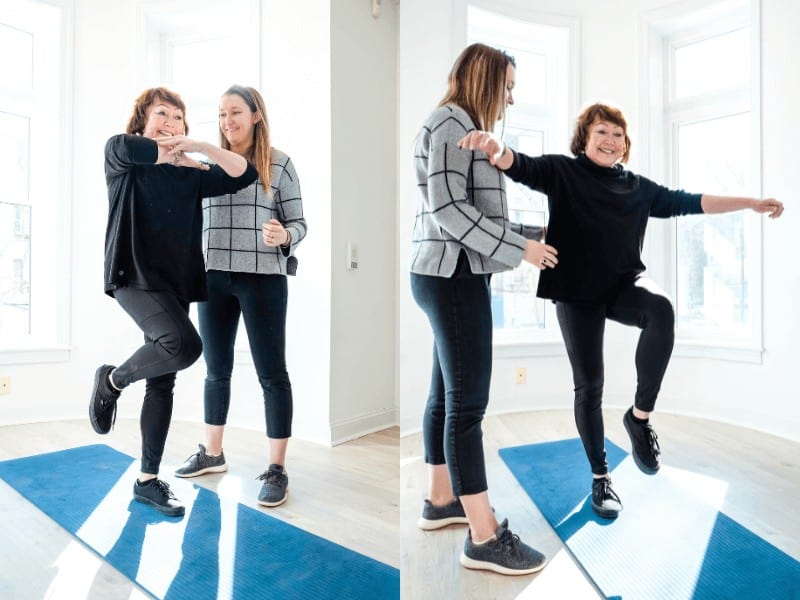
#2: Single Leg Stand
An easy static balance exercise to do around the house—washing dishes or brushing your teeth—standing on one leg might seem like an easy task, but it’s also a great way to improve your balance and test your mobility.
Stand with your feet hip-width apart and your weight evenly distributed between both legs.
With your hands on your hips or touching a wall for support, lift your left leg.
Make sure to keep your hips level and a slight bend in your right knee
Lift your knee to hip level (for an easier lift, slightly hover your foot above the ground) and hold for up to 30 seconds.
Place your foot back on the floor and repeat with your other leg. Do this three times on each side.
For an advanced single leg stand, balance on a BOSU ball and after lifting your knee, extend your foot forward so that your leg is perpendicular to the ground. If that’s too advanced, try using a pillow or foam pad instead of the BOSU.
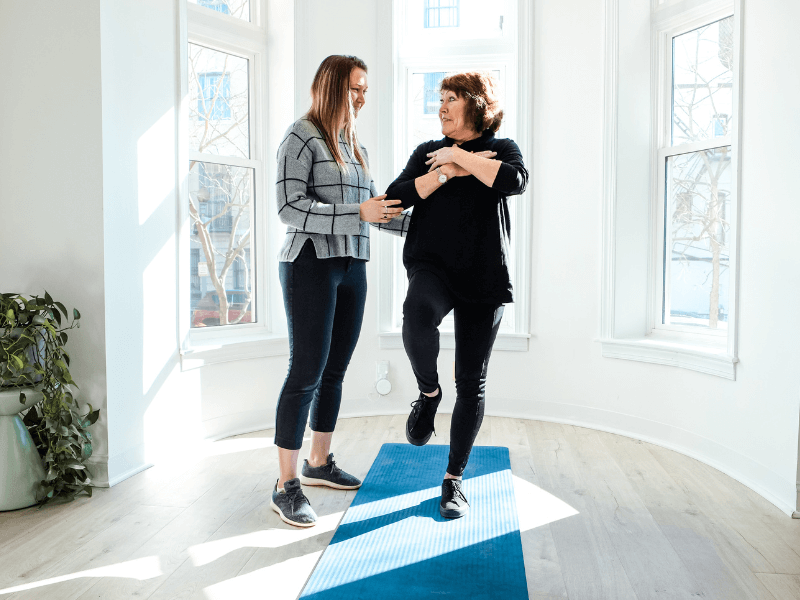
#3: Heel-to-Toe Walking
Walking heel to toe down a straight line is a simple dynamic balance exercise you can do easily at home.
Standing upright, place your right foot firmly on the ground and position your left heel directly in front of your right toes.
Step this left foot onto the ground firmly.
Lift up your right foot and place the heel in front of your left foot.
Continue this tightrope walking motion for 10 steps.
For an easier exercise, start with standing in a heel-to-toe position and balance for up to 30 seconds. This will help you feel more comfortable in this position before walking like you are on a tightrope!
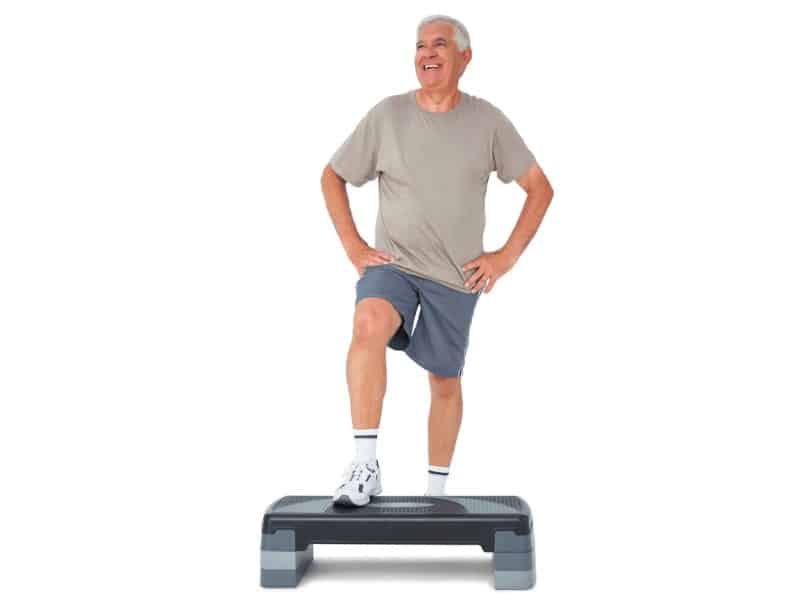
#4: Step-Ups
Step-ups are a great dynamic balance exercise for strengthening your core and improving your balance.
At the base of a staircase, next to a wall for support, step up to the first step with your right foot.
Shift your weight fully into the right foot and lift up the left foot to meet the right.
Step back down with the left foot, followed by the right.
Repeat five times with the right foot stepping first, then switch to the left foot stepping first.
For an easier exercise, start with a step-tap. For this exercise, you place one foot on the step, then back to the ground. Repeat with the opposite leg. Step-taps challenge your balance as you are working up to the full step-up exercise!
For an advanced step-up, use a taller step, like a chair, and hold light weights in your hands. Step up with your right foot and pull your left leg up to meet it. In a continuous motion, bring your left knee up to hip level and hold for one second. To challenge proprioception, place a foam pad on the tall step- You’ll be surprised at how much harder it gets!

#5: Lateral Kicks
Another dynamic balance exercise, lateral kicks help strengthen your legs and support lateral movement.
Standing straight, shift all of your weight into your left foot.
Lift your right foot and, with a straight leg, extend your left leg out to the side.
Lift and lower your left leg five times.
Coming back to standing, shift your weight into your left leg and repeat leg lifts on the right side five times.
Be sure to stand in front of a wall or counter to hold on as needed.
For an advanced lateral kick, place your right leg on a foam pad or add a resistance band around your ankles – Now you are challenging multiple balance systems at once!
Conclusion
Try these exercises at home or connect with a physical therapist who can help you with balance physical therapy exercises that are personalized for your unique body and movement goals.
Learn more about our providers and book your session today.
About the Author
Dr. Molly Morgan is a physical therapist and pelvic health specialist with MovementX in Portland, OR. She believes that it’s imperative to have a strong, functional foundation in the pelvic floor. Molly Morgan is passionate about treating a variety of pelvic floor conditions, lumbosacral dysfunctions, and hip pain. She is committed to providing one on one care to meet you needs and work towards your goals.



